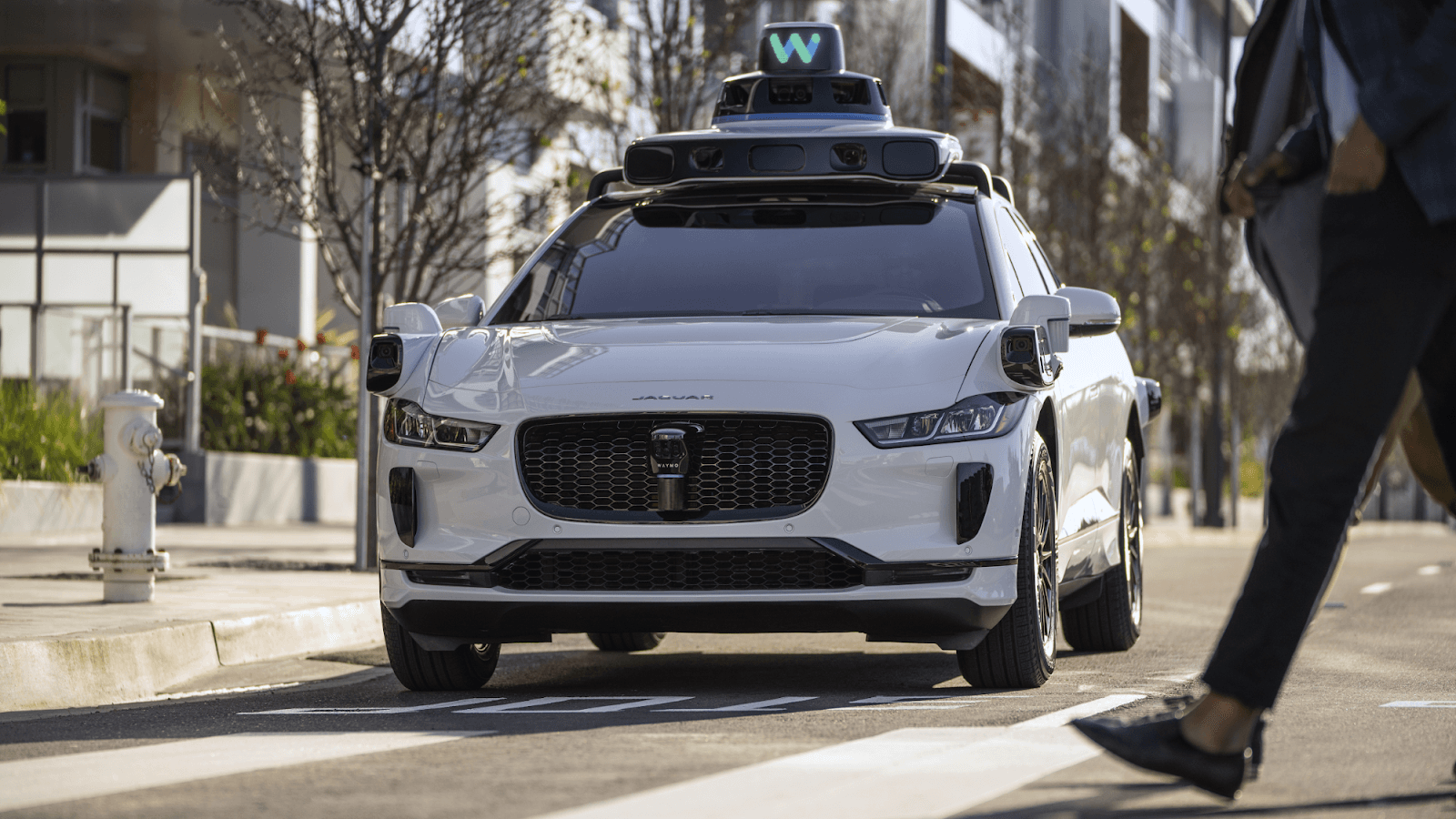Sophia here. On this week’s Ride AI podcast episode, I had the opportunity to interview Ryan Green, co-founder and CEO of Gridwise. We talked about the trends towards robotics and autonomy taking place in the ridehailing and delivery space, and how gig workers probably don’t need to worry… at least not yet. You can find the episode over on Spotify, and make sure to follow us to know when the next episode drops.
Now, Here’s What’s Happening.
Sundar Pichai said Waymo might be willing to sell you a self-driving car during an Alphabet earnings call. The comment came in response to a question about Waymo’s long-term business models. Pichai also noted that future plans include expanding partnerships with companies like Moove in Miami and Uber in Austin and Atlanta.
This isn’t the first time the idea of selling Waymo-equipped vehicles has been raised. As far back as 2018, when Waymo was still installing its hardware on Chrysler Pacificas, the company had publicly discussed the possibility of making self-driving vehicles available for private ownership. Waymo isn’t alone in this vision; Tesla has long promised privately owned, self-driving vehicles as well.
Personally, I would love to own a car equipped with the Waymo Driver. However, it's likely that Waymo would not simply sell the hardware without an associated service plan. There would probably be a monthly or yearly subscription fee to cover remote or roadside assistance when needed—and it likely wouldn’t be cheap. Still, for people who commute long distances daily or have accessibility needs, a privately owned, Waymo-driven vehicle could offer incredible value, transforming both convenience and quality of life.
Huawei has unveiled its new Qiankun ADS 4.0 self-driving system, which launches with L2 capabilities but is designed to achieve L3 autonomy across all scenarios and weather conditions. The system uses a comprehensive sensor suite, including LiDAR, mmWave radar, and cameras. Huawei’s current-generation system, Qiankun ADS 3.0, is already widely regarded as the best L2 autonomous driving system in China. With the rollout of Qiankun ADS 4.0, Huawei could soon follow in the footsteps of Mercedes by launching a certified L3-capable system, potentially cementing its leadership in L3 autonomy within the Chinese market.
Volkswagen’s MOIA division will soon deploy “thousands” of robotaxis through Uber. Previously, MOIA had been testing its autonomous ID.Buzz vehicles in the harsh winter conditions of Oslo. Now, it will take on a warmer climate, with operations set to begin in Los Angeles in 2026. According to Uber’s press release, testing with safety drivers is expected to start later this year.
On a personal note, it's a bit disappointing that MOIA chose not to retain the iconic two-tone color scheme for the ID.Buzz. Nevertheless, it’s exciting to see a larger autonomous vehicle option entering the market—a welcome addition for those times when extra space is needed. Along with Waymo’s upcoming Zeekr ride vehicle, MOIA’s autonomous ID.Buzz could offer a compelling, UberXL-type experience for riders seeking roomier, self-driving transport options. (We spoke to MOIA CEO Sascha Meyer onstage at Ride AI earlier this month about VW’s autonomous ambitions.)
Image Credit: Uber
Japan is quickly becoming a key hub for AV testing, with Wayve offering a first look at its AI driving system operating on Japanese roads. In a newly released video, the Wayve AI Driver is shown navigating a suburban area near Tokyo under overcast and rainy conditions, a challenging environment that highlights the system's adaptability. Wayve now joins a growing roster of companies testing in Japan, including Waymo and Nuro, alongside homegrown innovators such as Tier IV—known for retrofitting Japan’s iconic black taxis—and Gekidan Iino, which is developing a self-driving hop-on, hop-off platform for sidewalks.
Responding to criticism from Elon Musk about Waymo’s reliance on expensive sensors, former Waymo boss John Krafcik did not mince words about Tesla’s own robotaxi efforts:
Tesla has never competed with Waymo — they’ve never sold a robotaxi ride to a public rider. They’ve failed utterly and completely at this for each of the 10 years they’ve been talking about it… In the long run, the cost of sensors has a trivial cost-per-mile impact over the useful life of a robotaxi, while also providing massive quantifiable safety benefits.
This sentiment echoes what I’ve heard from other AV company CEOs, specifically Xiaodi Hou, who was on our podcast last week. He explained that he instructed his engineers to treat LiDAR as if it were essentially free, noting that the cost of the sensors—when amortized over the effective lifetime of a vehicle—amounts to a negligible impact on overall operating costs.
Personally, I’ve got my popcorn bucket ready. Tesla is about to enter the robotaxi market with its own offering, and I’m dying to see how it performs and what limitations it will have, particularly around service area, driving performance, and backup support systems. Only time will tell if the all vision bet will pay off…
In Other News…
- Waymo hits 250,000 paid rides a week, scaling seemingly not a concern
- Pony.ai considers other exchanges over US delisting fears
- Virginia will use technology to slow chronic speeders’ cars – and other states are rushing to join in
Alright, that’s it from me… until next week!
